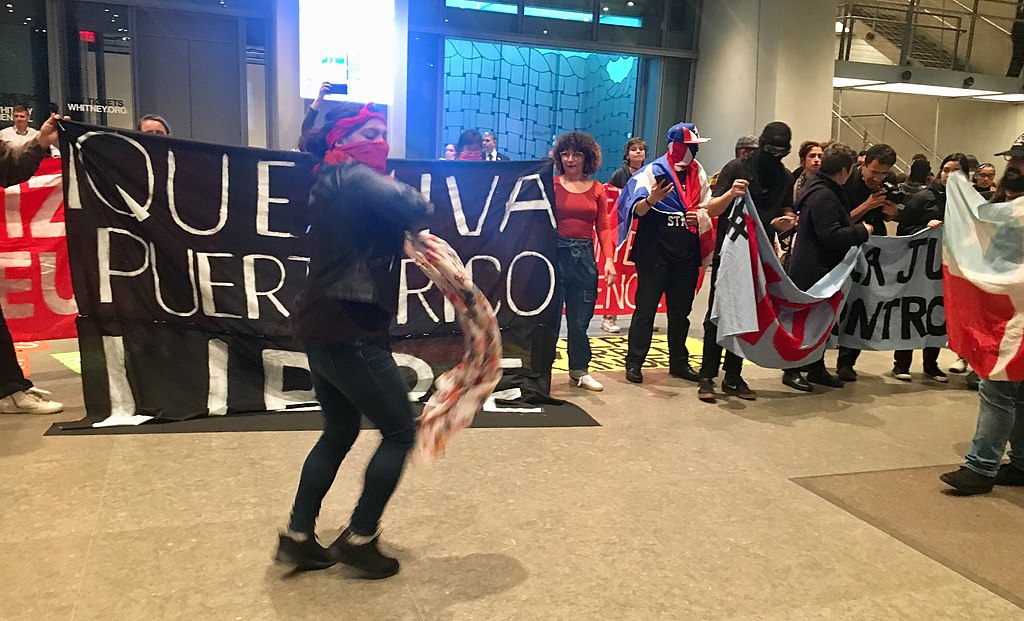Individual Donors Can Create the Future of the Arts

Cultural organizations are increasingly being called upon to refuse funding that their critics regard as ethically questionable, such as private prisons, tear gas, opioids, environmentally damaging sources of energy, etc.
Humans inherently process change as loss, and there is a foundation for this. Change is loss of the past. And, change imposed upon us from without is especially painful, as so many in the cultural world are learning. The only way out of this pain is to be the leaders of it.
The donors whose funding is being protested maintain they simply want to support the arts, artists, and, increasingly, underrepresented artists such as artists of color and women. How then do these donors manage to do this when so many artists and members of the public are encouraging cultural organizations to refuse gifts connected to sources they consider ethically questionable? Grantmakers in the Arts (GIA) offers below some ideas for how donors can engage in supporting the arts differently than they may have done in the past.
While we at GIA do not know the hearts of others, we offer a series of recommendations that take these donors at face value with respect to their spoken intentions. There are many means by which to support the arts that will avoid the rejection of their gifts by cultural organizations.
- Donors can surrender their name-recognition, give the resources to their community foundations, require that the funds go to support artists and cultural organizations and insist that the donations remain anonymous. Many recent donations to cultural organizations have facilitated increased opportunities for artists of color. Donors can easily stipulate that community foundations target their anonymous donations to support of artists and organizations of color. Further, these resources can be targeted to serving low-income residents and the organizations that serve them.
- Donors can insist that our governments – municipal, local and federal – increase taxpayer support to the arts through arts agencies and other agencies. Robust bodies of evidence correlate arts-engagement with improved social outcomes in education, health, civic engagement, safety, among others. These improved outcomes are especially marked in low-income communities. Our arts agencies’ budgets should all increase. Every public agency should have a robust cultural budget as well.
- Donors can leverage their influence to increase giving to arts and culture by all.
- The 2017 Tax Cuts and Jobs Act nearly doubles the standard deduction in 2018—to $12,000 for singles and $24,000 for joint filers younger than age 65—while capping or eliminating other deductions. That means it will no longer make sense for as many taxpayers to itemize, reducing the incentive to make donations to nonprofit organizations. The new Giving USA 2019 report reveals that in 2018 individual charitable giving declined for the first time in five years. Donors can insist that the federal government lowers the threshold for standard deductions to restore the earlier levels of giving.
- Similarly, donors can insist that the federal government revise our laws to do away with the charitable deduction entirely and instead give a uniform credit for charitable contribution to incent giving across economic strata.
Needless to say, the manner in which individual donors make their money is at their discretion as is the decision of an organization whether or not to accept it. We do wish to consider – and for us to collectively re-consider – the motivations that have informed cultural philanthropy.
The field of cultural philanthropy developed when newly rich individuals sought influence through supporting the arts. These individuals also sought to establish themselves in society by attaching their names to institutions, facilities, collections, and events that relied upon highlighting the European canon (or stolen artifacts ‘acquired’ during European imperialism). And the larger the institution, the more influence to be gained. Ultimately, this created a field that still relies upon the generosity of wealthy board members who use their positions and their giving as a means of social capital. Such a dynamic can harm large institutions by leaving them too vulnerable to refuse a gift and also smaller organizations through neglect or pressure to grow faster than they are capable.
Arts supporters of today do not have to retread strategies from the past. Arts supporters of today have the wisdom, the courage, and the humility to collectively forge a new cultural world - the cultural world we want to live in.
** The GIA Capitalization and Racial Equity in Arts Funding workshops dive deeper into these histories and explore more equitable and healthy practices for arts funders. If you’re interested in learning more, please contact Eddie Torres at eddie@giarts.org.
